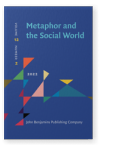Vol. 12:2 (2022) ► pp.224–244
‘As democracy grows’
Metaphor scenarios for democracy in Nigerian Senate debates of the Fourth Republic
This paper investigates the metaphorical framing of the concept of democracy in Nigerian Senate debates (henceforth, NSD) in a mini-corpus of 214 meta-discursive commentaries on democracy by legislators, with insight from metaphor scenario theory. Three source concepts – “ erect structure”, “living organism”, “dividends” and their associate scenarios are analysed. These scenarios are exploited by legislators to effect specific argumentative and ideological conclusions, such as Nigerian democracy is weak, positive-self-presentation by legislators amongst others. The paper reveals the conceptual, evaluative and ideological structures that dominate the discourse about democratization in Nigeria, especially in the Fourth Republic, from the perspective of legislators.
Article outline
- 1.Introduction
- 1.1Literature review
- 2.Metaphor Scenario Theory
- 3.Methodology
- 4.Analysis
- 4.1Source concepts for democracy
- 4.1.1Metaphor scenarios for democracy
- erect structure metaphor
- living organism metaphor
- dividends metaphor
- 4.1.1Metaphor scenarios for democracy
- 4.1Source concepts for democracy
- 5.Conclusion
- Acknowledgements
- Note
-
References
